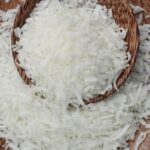CASHEW NUT SHELL OIL
In the meat processing industry, particularly in the production of meatballs, the need for effective binders, stabilizers, and texture enhancers is crucial. These ingredients ensure product quality, consistency, and economic viability. One ingredient that has proven to be a game-changer in meatball production is modified tapioca starch. Derived from the cassava root, modified tapioca starch undergoes physical or chemical modifications to adapt its properties, making it ideal for various food applications, especially in meat products. In this article, we will explore the five essential functions of modified tapioca starch in meatball production and how it benefits manufacturers in improving product quality and performance.

Table of Contents
Toggle1. Binding and Cohesion
One of the primary functions of modified tapioca starch in meatball production is its ability to act as an effective binder. Meatballs require a consistent structure that holds together well during cooking and packaging. Traditional binders like bread crumbs or flour may not always provide the desired level of cohesion, especially for mass production.
Modified tapioca starch, with its unique gelatinization properties, forms a strong network within the meat mixture, improving the binding of meat particles and other ingredients. This cohesive structure ensures that the meatballs maintain their shape, whether during frying, steaming, or freezing. Additionally, it reduces the risk of breakage or crumbling during processing and transportation, leading to a more visually appealing and structurally sound product.
2. Moisture Retention
A major challenge in meatball production is moisture loss, which can lead to dry and unappetizing products. Consumers expect meatballs to be juicy and tender, and moisture retention plays a crucial role in achieving this texture. Modified tapioca starch excels in absorbing and retaining moisture within the meatball matrix.
When heated, modified tapioca starch gelatinizes, creating a gel-like consistency that traps water molecules, preventing them from escaping during cooking. This leads to a juicier product that retains its tenderness, even after extended cooking or reheating. In addition, this moisture retention capability allows for a higher yield during production, as less moisture is lost, reducing shrinkage and weight loss.
3. Improved Texture and Mouthfeel
Texture is a critical factor in consumer satisfaction when it comes to meatballs. The perfect meatball should have a balance between firmness and tenderness, providing a pleasant eating experience. Modified tapioca starch plays an essential role in enhancing the texture of meatballs by improving the overall mouthfeel.
The gelatinization of modified tapioca starch during cooking helps create a smooth, consistent texture by filling in gaps between meat fibers. This results in meatballs that are tender yet firm enough to hold their shape. The starch also helps reduce the perceived greasiness of the product by absorbing excess fat, leading to a cleaner mouthfeel without compromising flavor. Additionally, the smooth texture provided by modified tapioca starch is especially beneficial in products like gluten-free or plant-based meatballs, where achieving the desired texture can be more challenging.
4. Fat Reduction and Healthier Formulations
As consumers become more health-conscious, the demand for lower-fat meat products is on the rise. Modified tapioca starch can help manufacturers meet this demand by allowing for the reduction of fat content in meatballs without sacrificing texture or flavor. By absorbing and binding water, modified tapioca starch can mimic some of the textural properties that fat typically provides.
This allows manufacturers to formulate meatballs with reduced fat content while maintaining the desirable qualities of traditional meatballs. The use of modified tapioca starch also aligns with clean label initiatives, as it is a natural ingredient derived from cassava and can help reduce reliance on artificial additives or fillers.
5. Enhanced Freeze-Thaw Stability
One of the biggest challenges in producing frozen meat products is maintaining quality after the freeze-thaw cycle. Traditional starches and binders may cause the meatballs to lose texture, become mushy, or experience syneresis (water separation) when frozen and thawed. However, modified tapioca starch offers excellent freeze-thaw stability, making it an ideal choice for frozen meatballs.
Thanks to its modified structure, tapioca starch resists retrogradation, a process where starch molecules crystallize and expel water during freezing. This ensures that meatballs made with modified tapioca starch retain their original texture, moisture, and structure after being thawed. The result is a product that remains firm, juicy, and visually appealing, whether sold fresh or frozen, significantly reducing product waste and improving consumer satisfaction.

Conclusion
Incorporating modified tapioca starch into meatball production offers numerous benefits that address the challenges manufacturers face, from binding and moisture retention to improving texture and freeze-thaw stability. By leveraging its unique properties, manufacturers can produce high-quality meatballs that meet consumer demands for texture, juiciness, and health-conscious formulations. The five essential functions of modified tapioca starch—binding, moisture retention, texture enhancement, fat reduction, and freeze-thaw stability—make it a valuable ingredient in the evolving landscape of meatball production. As the market continues to grow and consumers seek better quality and healthier options, modified tapioca starch provides an innovative solution for meat producers aiming to stay ahead of the competition.












